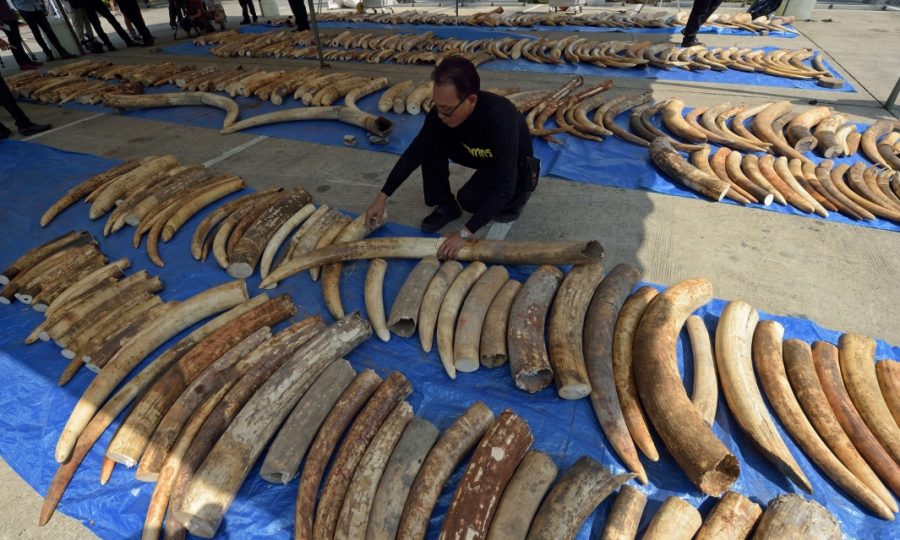Illegal Ivory and Tuskless Elephants
December 20, 2018
Officials have discovered more than three tons of illegal ivory which was hidden among marble in an abandoned container shipped from Mozambique. Cambodia has emerged as a hub for ivory. This is only the most recent case. The abandoned shipping container was found in Cambodia’s Phnom Penh port. The owner reportedly never showed up to pick up the cargo and a tip from the U.S embassy alerted Cambodian authorities to the hall.
Earlier this year, authorities confiscated 3.5 tons of ivory bound for Cambodia.
Researchers indicate that about 40,000 elephants are killed each year, which is 10% of the population of elephants in Africa. DNA testing was the biggest help of identifying pairs of tusks that had been split between shipments out of Africa. This helped link shipments to other ports.
The DNA also helps to catch the poachers. It is expensive though. Every tusk costs $100 to genetically analyze. There could be 1,000 to 2,000 tusks in every shipment. So investigators have to strategically analylize only a sample of each diverted shipment. Dr. Washer said that when they link shipments by showing that tusks in two different shipments belong to the same family, they can link criminals to more than one shipment, leading to harsher sentences when they are caught.
Due to this, baby elephants are being born without tusks. Because hunters consistently target animals with the best ivory over decades, which changes the animals gene pools. In some areas, 98% of female elephants now have no tusks compared to the average amount of elephants born in the past, this is a large increase.
Almost a third of Africas elephants have been slaughtered illegally by poachers in the past ten years to meet demand for ivory in Asia. And since 2006, the population of the elephants have decreased by an estimated 110,000 down to 415,000.
If this continues, the species has a risk of going extinct. The populations who survived, tuskless.
In 1977 to 1992, poachers disproportionately targeted tucked animals, almost half the females over 35 years of age have no tusks. That portion of poaching is now under control and the population is recovering well but the elephants are passing the tuskless genes to their daughters. 30% of female elephants born since the end of the war also do not have tusks. Scientist found that even the elephants who remained tusked had smaller tusks than elephants only a century before. Roughly half their previous size.
“Females who are tuskless are more likely to produce tuskless offspring.” Dr. Joyce Poole, the head of the charity elephant voices said. She has been tracking developments of the species for almost 30 years.
Although not having tusks may protect elephants from poaching, it’s not ideal for the species itself. “The tusks are used to dig for food and water, to dig up trees and branches and move them around for self defense and sexual display. Conservationists say that an elephant without tusks is a crippled elephant.” BBC reported.


